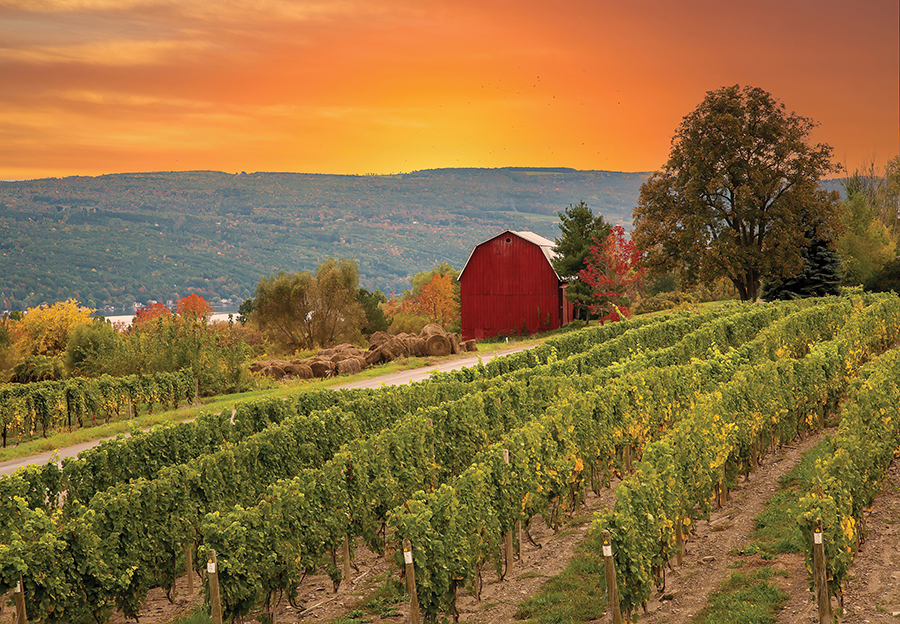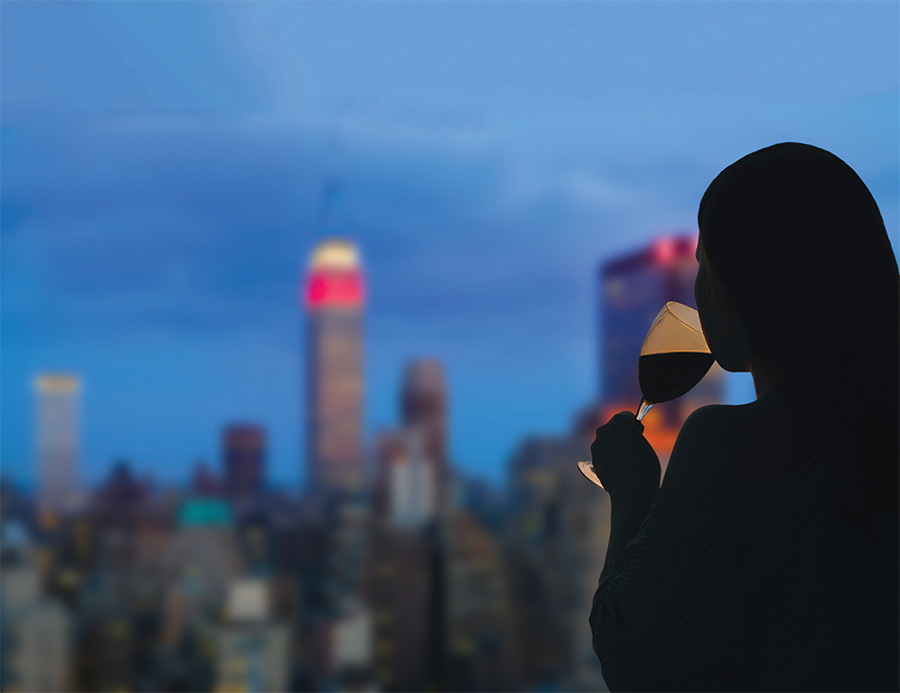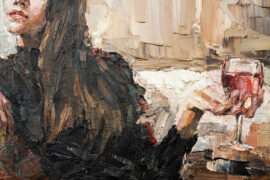The wines of the Empire State are worth exploring.
By Matthew DeBord
HQ 121 | Spring 2023
It has been my good fortune to live in both New York State and California, home of two of the world’s great wine regions. Wait a second! New York State? To steal a phrase from a famous American tennis star, “You cannot be serious!”
But I am serious indeed, because it was also my good fortune to report on the wines of New York when I worked at Wine Spectator magazine at the turn of the century. I even wrote a book about the wines of the Empire State titled The New York Book of Wine: A City and Company Guide (published by Universe in 2004 and available on Amazon).
Mind you, if you don’t live in the Northeast, New York’s wines can be tricky to track down; but because the state’s regions don’t really export their bottlings, their respective wineries have developed a nice business in catering to tourists. So, the next time you visit the Big Apple, consider carving out a day to explore this historically important winemaking state.
New York’s wine industry can be broken down into three key regions: the Hudson River Valley, Long Island and the Finger Lakes. Each has its own style and flavor. The Hudson Valley is low-key and rustic. Long Island is ambitious and fairly easy to manage as a visitor. And the Finger Lakes has the best wines!
I’ll start with the Hudson Valley, where seasoned wine drinkers will be surprised to find a lot of “native varietals” — wines that are made from the grapes that are original to North America, as opposed to the more famous names that most of us know from Europe — grapes such as Cabernet Sauvignon, Merlot and Chardonnay. That doesn’t mean New York’s native wines such as Seyval Blanc and Baco Noir are inferior. Rather, these wines are simply different, and they embody history. After all, winemaking on the banks of the Hudson River goes back to the 17th century.
Long Island has been New York’s up-and-coming wine region for a few decades. The area divides into the North and South Forks, with the South Fork nearer to the fashionable vacation enclaves collectively referred to as the Hamptons and the North Fork organized around one-time potato fields transformed into vineyards. Long Island would like to be the California of the East, and for many years the winemakers here focused on Merlot and Chardonnay. But in recent years, wines that make more sense in the extremes of the maritime Atlantic climate (hot, hot summers and cold, cold winters) have gained respect. Cabernet Franc stands out as a solid red performer, while pink Rose dominates the summer.

On the South Fork, my favorite winery is Wolffer Estate; on the North Fork, Bedell Cellars never disappoints. But there are dozens of wineries to choose from, and the majority are nicely arranged along the few main roads on both forks.
What about the Finger Lakes? Located in New York’s chilly northern reaches and named after long, finger-like lakes that were formed by retreating glaciers, this part of the state produces the best wines. Here, this viticultural kingdom is ruled by Riesling.
Riesling is America’s most underappreciated varietal, a consequence of the many unctuously sweet, imported German versions that were sold in the 1960s and 1970s. The Finger Lakes produces some sweet whites, but they are generally pitched as dessert wines, while much drier Rieslings are where the true talent concentrates its efforts. The two largest lakes, Seneca and Cayuga, are ringed with wineries, while a third lake, Keuka, is home to one of the region’s best-known establishments, Dr. Konstantin Frank Winery. There are many B&Bs in the area, along with other attractions including the Watkins Glen racetrack and Cornell University.
The price-to-quality ratio for Finger Lakes Riesling is off the charts. A wine from Fox Run Vineyards or Red Newt Cellars can go bottle-to-bottle with the best mid-level German Rieslings while setting you back only $15-25. The regional style is crisp and fruity, with nice acidic definition. These are great food wines, but to label them thusly doesn’t mean you shouldn’t enjoy them on their own. And if you really must drink reds, Cabernet Franc and some leaner versions of Pinot Noir are also on the agenda.
Make no mistake, New York, despite its history, will never be California. The Golden State simply has too fabulous a winemaking climate and growing conditions that are nearly perfect from the Bay Area to Baja. But New York has over the last 30 or 40 years managed to develop three regions that are well worth visiting and, in the case of Finger Lakes Riesling, created a world-class wine that is rewarding to track down online.
So put yourself in a New York state of mind and give the place a thought the next time you’re planning some wine-drinking travel.





